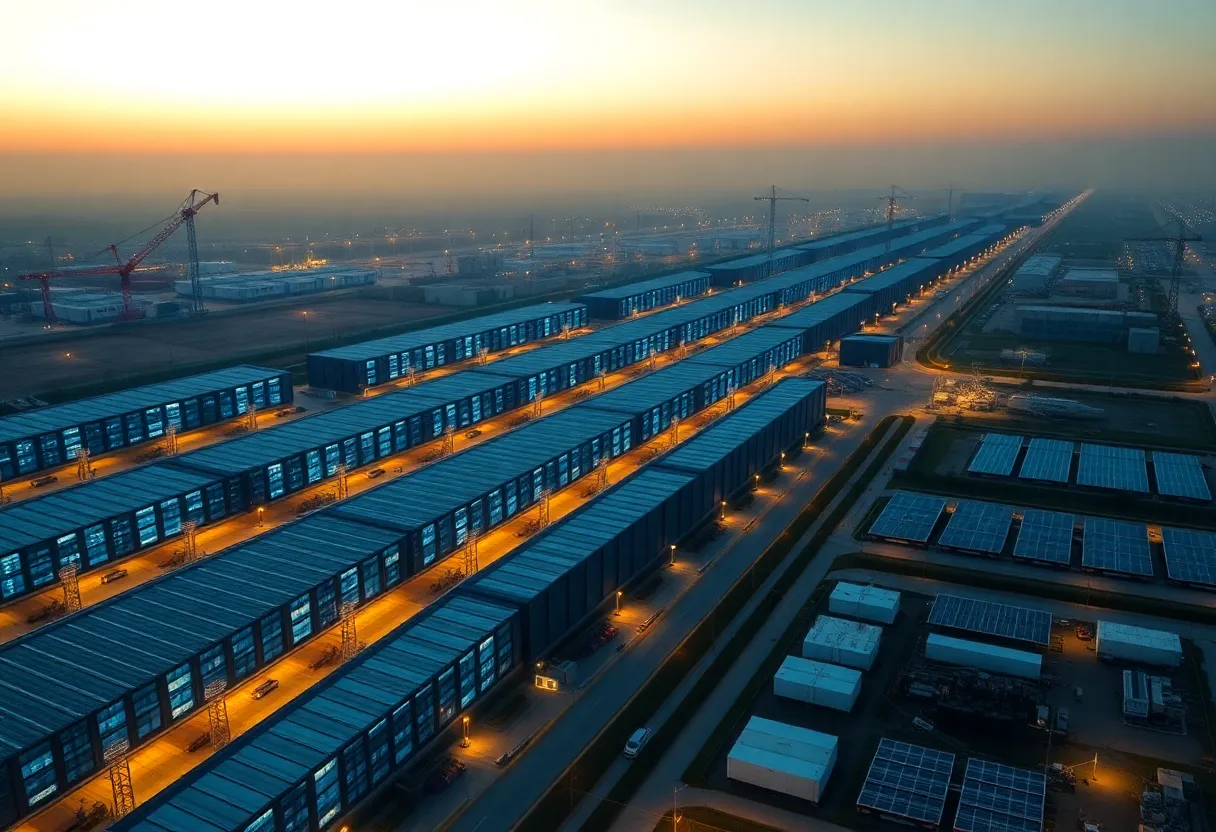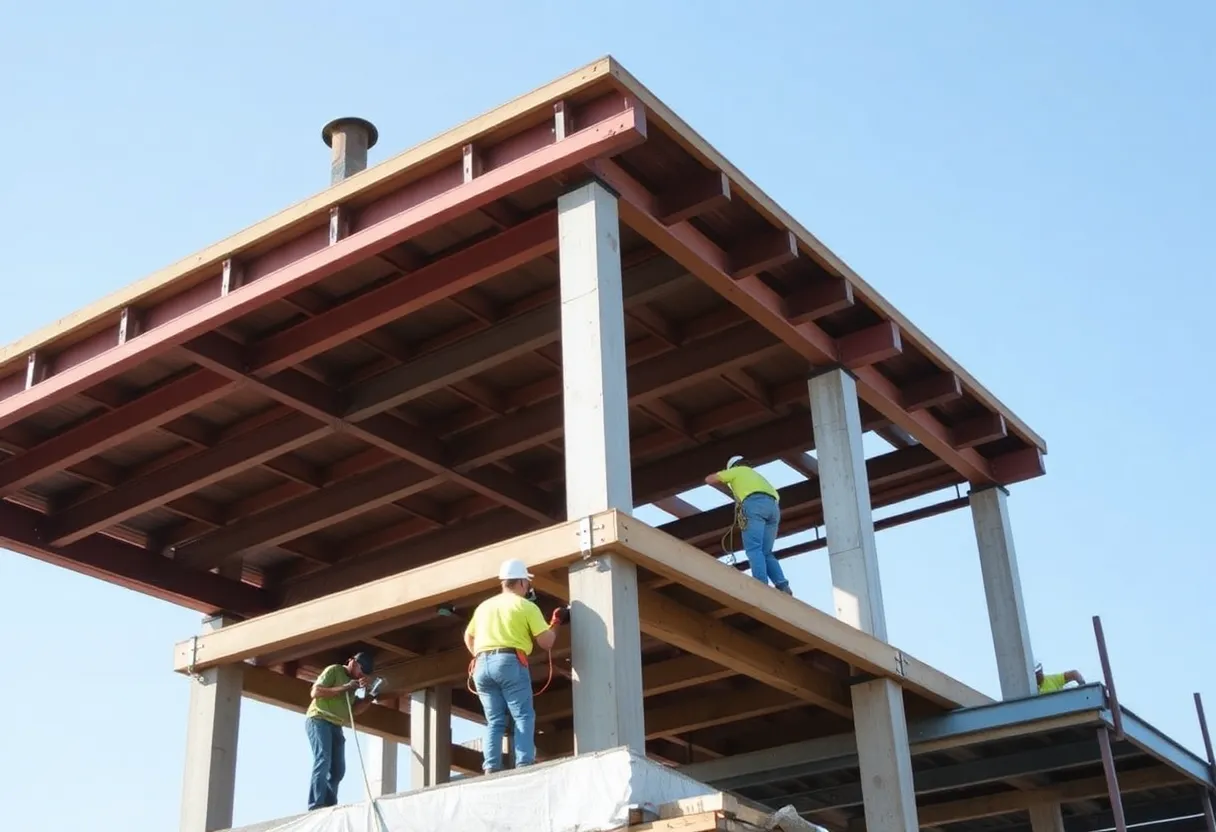, September 27, 2025
News Summary
Rapid hyperscale cloud and AI growth is triggering a capital‑intensive sprint to build next‑generation data centers, requiring project‑level construction debt, HoldCo facilities, mezzanine equity and permanent takeouts. Developers and lenders are adopting layered financing and accelerated diligencing to close larger, higher‑power projects, while local grids and communities confront transmission upgrades, backup generator pollution and debates over who pays. Key hubs from northern Virginia to I‑85 corridors and parts of Texas face rising rents and multi‑gigawatt demand forecasts. Early financial planning, comprehensive documentation and utility coordination are now essential to reduce execution risk and secure lower long‑term costs.
Hyperscaler cloud and AI race fuels huge, capital‑intensive data center buildout, new finance models and grid fights
What’s happening now: Rapid expansion by hyperscale cloud and artificial intelligence (AI) customers is creating a capital‑intensive sprint to build next‑generation data centers. Developers and lenders are responding with new financing structures and faster execution plans to keep pace. At the same time, local power grids and communities are confronting large new electricity demands and policy disputes over who pays for upgrades.
Top lines — immediate facts
Hyperscaler demand is driving projects that can require more than 1 gigawatt of power for a single campus and can cost billions of dollars to construct. Developers use a mix of project‑level construction debt, holding‑company (HoldCo) facilities, mezzanine equity and structured takeout financing to bridge construction and long‑term ownership.
Why financing matters first
Project financing is the foundation of every large build. Project‑level construction debt typically covers hard and soft costs through construction and initial operations, and commonly runs for three to five years. These loans are underwritten differently than traditional commercial real estate credit, with lenders evaluating technical, operational and contractual risk around single‑tenant, high‑power builds.
Lenders increasingly require a complete diligence package before closing, including material project documents (such as the lease and a construction contract with a guaranteed maximum price), third‑party technical reports, appraisals and environmental site assessments. These expectations mirror nonrecourse infrastructure financings and make early planning essential for developers.
New and layered financing approaches
As competition for capital and speed rises, developers are using layered approaches. HoldCo financing—debt or mezzanine capital provided at the parent level—can preserve operational flexibility for a developer group and act as a backstop for cost overruns or delays. HoldCo facilities are structured with protections for lenders that differ from project‑level security and often include covenants, intercompany guarantees or cash‑flow waterfalls.
After construction and initial lease stabilization, developers replace construction debt with permanent takeout capital. Common takeout instruments include broadly syndicated term loans, private placements and asset‑backed securitizations. These options typically deliver lower costs and higher advance rates because the asset’s risk profile shifts once construction risk is eliminated and lease cash flows become predictable.
Market dynamics: speed and scale win
With hyperscalers placing long‑range capacity plans—some IT leaders are looking five years ahead—developers who can move rapidly from land acquisition to initial funding gain an edge. Syndication risk, tax considerations and state/local permitting (especially power) all influence a project’s timeline and pricing. Early engagement with finance, construction, tax and legal teams has become a strategic necessity.
Grid impacts and policy fights
Data center power demand is straining grids in key hubs. Industry research shows rent pressures rising in major markets, with mid‑2025 data pointing to steep year‑over‑year rent increases in northern Virginia and Chicago. Regional utility planning projects peak demand for data centers rising sharply over the next decade and beyond—for one service area, projections show peak demand growing to the low‑double‑digit gigawatt range by the late 2030s. Those increases represent a multiple of 2022 baselines.
Communities face tradeoffs: new transmission lines, substations and distribution upgrades are needed, and debate is underway about how much of that cost should be borne by general ratepayers versus high‑load customers. Proposals to study or create separate rate classes for large technology customers have been introduced in state legislatures, prompting heavy local negotiation about incentives, fairness and economic development.
Backup power also raises environmental and operational concerns. In some regions, thousands of permitted diesel generators total more than 10 gigawatts of capacity. The rapid build of both grid and on‑site backup resources is creating permitting, air‑quality and community tension points.
Geography of growth
Several corridors are shaping the next wave of supply: long‑established northern Virginia clusters remain critical because of dense fiber, power and customer proximity; growing hubs along the I‑85 corridor, parts of Texas, and the inland Northwest leverage affordable land, renewable generation and cooler climates; coastal landing points and subsea cable access also factor in decision‑making.
Why developers and corporate treasuries should care
Understanding financing options and the timing of each capital stage is crucial. Early planning for documentation, third‑party diligence and eventual takeout will improve borrowing terms and reduce execution risk. The market is maturing: the lines between project finance, real estate finance and leveraged finance are blurring, and successful projects will align capital sources with the distinct life‑cycle stages of an asset.
Bottom line
Rapid hyperscaler growth and rising AI compute needs are reshaping how large data centers are financed, sited and built. Developers who organize financing early, anticipate grid and permitting hurdles, and prepare for a staged path from construction debt to permanent capital are best positioned to deliver projects quickly and at lower cost. Readers should treat this as general information and seek tailored legal and financial advice for specific situations.
Frequently Asked Questions
Q1: What is the primary financing used to build large data centers?
A: The primary tool is project‑level construction debt, a short‑term loan that funds the hard and soft costs of building through initial operation, usually for three to five years.
Q2: How do HoldCo financings work and why use them?
A: HoldCo facilities are raised at the parent or sponsor level instead of the project company. They provide extra flexibility to address delays or cost overruns, and can be structured as debt or mezzanine equity with lender protections tailored to sponsor credit.
Q3: When should developers plan for permanent takeout financing?
A: Planning should begin early—well before construction completes—to ensure a smooth transition. Permanent capital sources typically include syndicated loans, private placements and securitizations offered at lower cost once leases stabilize.
Q4: How big is the power problem and what are the consequences?
A: Large campuses may need 100s of megawatts or more; some projections show multi‑gigawatt peak demand growth in key regions over the next 10–15 years. This drives transmission upgrades, potential rate effects for customers, and local debates about infrastructure costs and environmental impacts.
Q5: What documents do lenders usually require?
A: Lenders commonly expect the lease, a construction contract with a guaranteed maximum price, third‑party technical consultant reports, appraisals and environmental site assessments as conditions precedent to financing.
Q6: Does this guidance replace legal or tax advice?
A: No. The information is general in nature. Developers and investors should obtain specific legal, tax and financing advice tailored to their projects.
{
“@context”: “https://schema.org”,
“@type”: “FAQPage”,
“mainEntity”: [
{
“@type”: “Question”,
“name”: “What is the primary financing used to build large data centers?”,
“acceptedAnswer”: {
“@type”: “Answer”,
“text”: “The primary tool is project-level construction debt, a short-term loan that funds the hard and soft costs of building through initial operation, usually for three to five years.”
}
},
{
“@type”: “Question”,
“name”: “How do HoldCo financings work and why use them?”,
“acceptedAnswer”: {
“@type”: “Answer”,
“text”: “HoldCo facilities are raised at the parent or sponsor level instead of the project company. They provide extra flexibility to address delays or cost overruns, and can be structured as debt or mezzanine equity with lender protections tailored to sponsor credit.”
}
},
{
“@type”: “Question”,
“name”: “When should developers plan for permanent takeout financing?”,
“acceptedAnswer”: {
“@type”: “Answer”,
“text”: “Planning should begin early—well before construction completes—to ensure a smooth transition. Permanent capital sources typically include syndicated loans, private placements and securitizations offered at lower cost once leases stabilize.”
}
},
{
“@type”: “Question”,
“name”: “How big is the power problem and what are the consequences?”,
“acceptedAnswer”: {
“@type”: “Answer”,
“text”: “Large campuses may need hundreds of megawatts or more; projections show multi-gigawatt peak demand growth in key regions over the next 10–15 years. This drives transmission upgrades, potential rate effects for customers, and local debates about infrastructure costs and environmental impacts.”
}
},
{
“@type”: “Question”,
“name”: “What documents do lenders usually require?”,
“acceptedAnswer”: {
“@type”: “Answer”,
“text”: “Lenders commonly expect the lease, a construction contract with a guaranteed maximum price, third-party technical consultant reports, appraisals and environmental site assessments as conditions precedent to financing.”
}
},
{
“@type”: “Question”,
“name”: “Does this guidance replace legal or tax advice?”,
“acceptedAnswer”: {
“@type”: “Answer”,
“text”: “No. The information is general in nature. Developers and investors should obtain specific legal, tax and financing advice tailored to their projects.”
}
}
]
}
Key features at a glance
| Feature | What it means | Typical values / examples |
|---|---|---|
| Project‑level construction debt | Short‑term loan funding construction costs and early operations | 3–5 year term; funds hard/soft costs; conditions include lease and GMP |
| HoldCo financing | Parent‑level facility to support sponsor flexibility and risk management | Structured as debt or mezzanine; used to cover overruns or bridge timing |
| Permanent takeout capital | Long‑term financing after stabilization, priced to tenant credit | Term loans, private placements, securitizations; lower borrowing cost |
| Power requirements | Large campuses draw very high electricity—adds strain to grids | Single campuses >100 MW; some corridors projecting multi‑GW peak demand |
| Documentation & diligence | Lenders require comprehensive project files and third‑party reports | Lease, GMP contract, technical consultant report, appraisal, Phase I ESA |
Disclaimer: This article provides general information about financing and infrastructure trends. It is not legal, tax or investment advice. Parties should seek tailored professional advice for specific transactions and local regulatory matters.
Deeper Dive: News & Info About This Topic
Additional Resources
- CIO Dive: Hyperscaler cloud and AI data capacity strains
- Wikipedia: Data center
- Virginia Mercury: Loudoun County neighbors fight proposed Dominion transmission lines
- Google Search: Loudoun County data centers transmission lines
- NBC Washington: Residents fight Dominion transmission line project in Ashburn
- Encyclopedia Britannica: Electric power transmission
- Bloomberg: Loudoun County data center growth strains residents seeking AI regulation
- Google News: Loudoun County data centers AI regulation
- Construction Dive: Executive order aims to speed data center construction
- Google Scholar: data center construction permitting
Author: Construction FL News
The FLORIDA STAFF WRITER represents the experienced team at constructionflnews.com, your go-to source for actionable local news and information in Florida and beyond. Specializing in "news you can use," we cover essential topics like product reviews for personal and business needs, local business directories, politics, real estate trends, neighborhood insights, and state news affecting the area—with deep expertise drawn from years of dedicated reporting and strong community input, including local press releases and business updates. We deliver top reporting on high-value events such as the Florida Build Expo, major infrastructure projects, and advancements in construction technology showcases. Our coverage extends to key organizations like the Associated Builders and Contractors of Florida and the Florida Home Builders Association, plus leading businesses in construction and legal services that power the local economy such as CMiC Global and Shutts & Bowen LLP. As part of the broader network, including constructioncanews.com, constructionnynews.com, and constructiontxnews.com, we provide comprehensive, credible insights into the dynamic construction landscape across multiple states.





